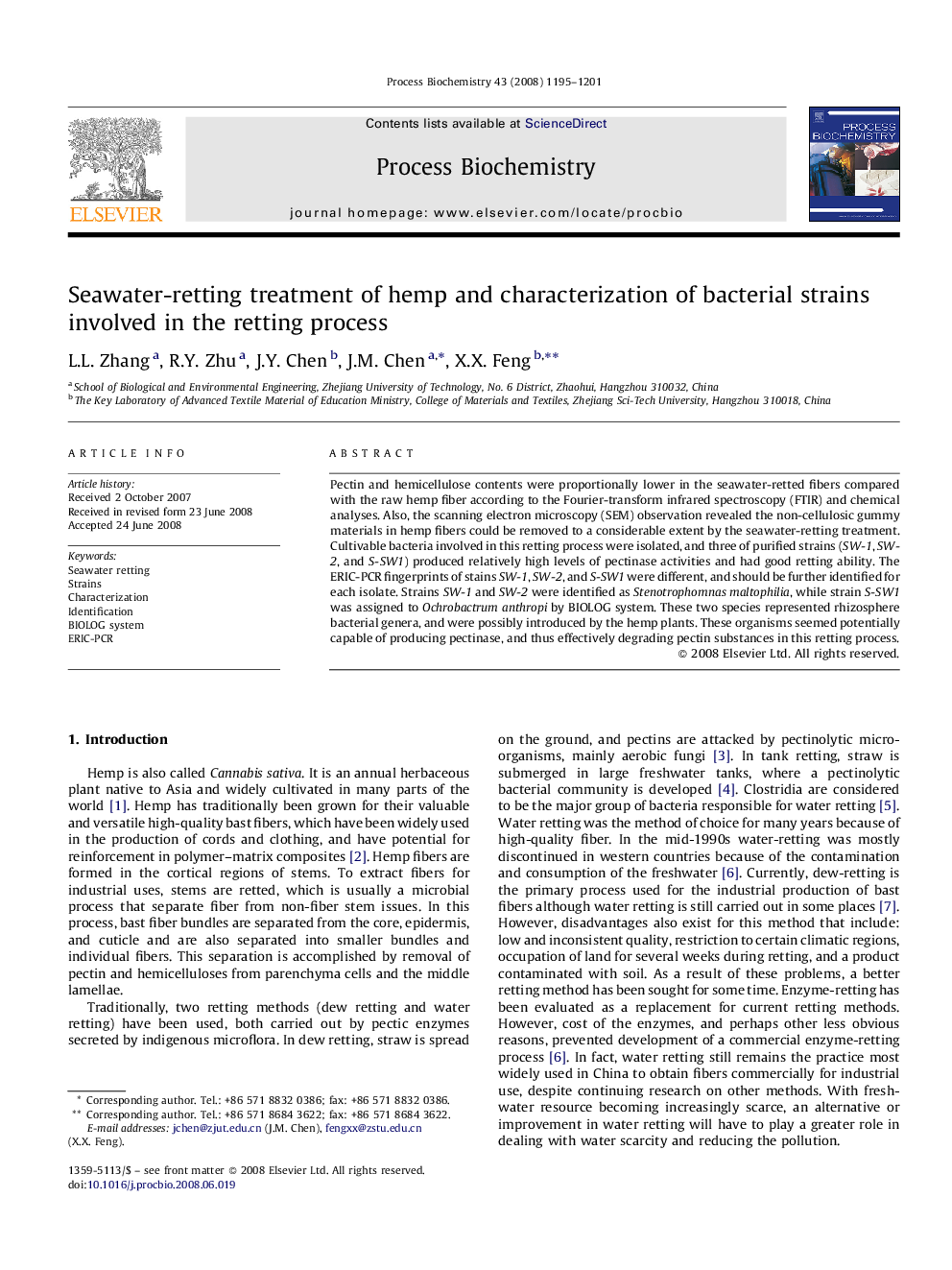| Article ID | Journal | Published Year | Pages | File Type |
|---|---|---|---|---|
| 35308 | Process Biochemistry | 2008 | 7 Pages |
Pectin and hemicellulose contents were proportionally lower in the seawater-retted fibers compared with the raw hemp fiber according to the Fourier-transform infrared spectroscopy (FTIR) and chemical analyses. Also, the scanning electron microscopy (SEM) observation revealed the non-cellulosic gummy materials in hemp fibers could be removed to a considerable extent by the seawater-retting treatment. Cultivable bacteria involved in this retting process were isolated, and three of purified strains (SW-1, SW-2, and S-SW1) produced relatively high levels of pectinase activities and had good retting ability. The ERIC-PCR fingerprints of stains SW-1, SW-2, and S-SW1 were different, and should be further identified for each isolate. Strains SW-1 and SW-2 were identified as Stenotrophomnas maltophilia, while strain S-SW1 was assigned to Ochrobactrum anthropi by BIOLOG system. These two species represented rhizosphere bacterial genera, and were possibly introduced by the hemp plants. These organisms seemed potentially capable of producing pectinase, and thus effectively degrading pectin substances in this retting process.
